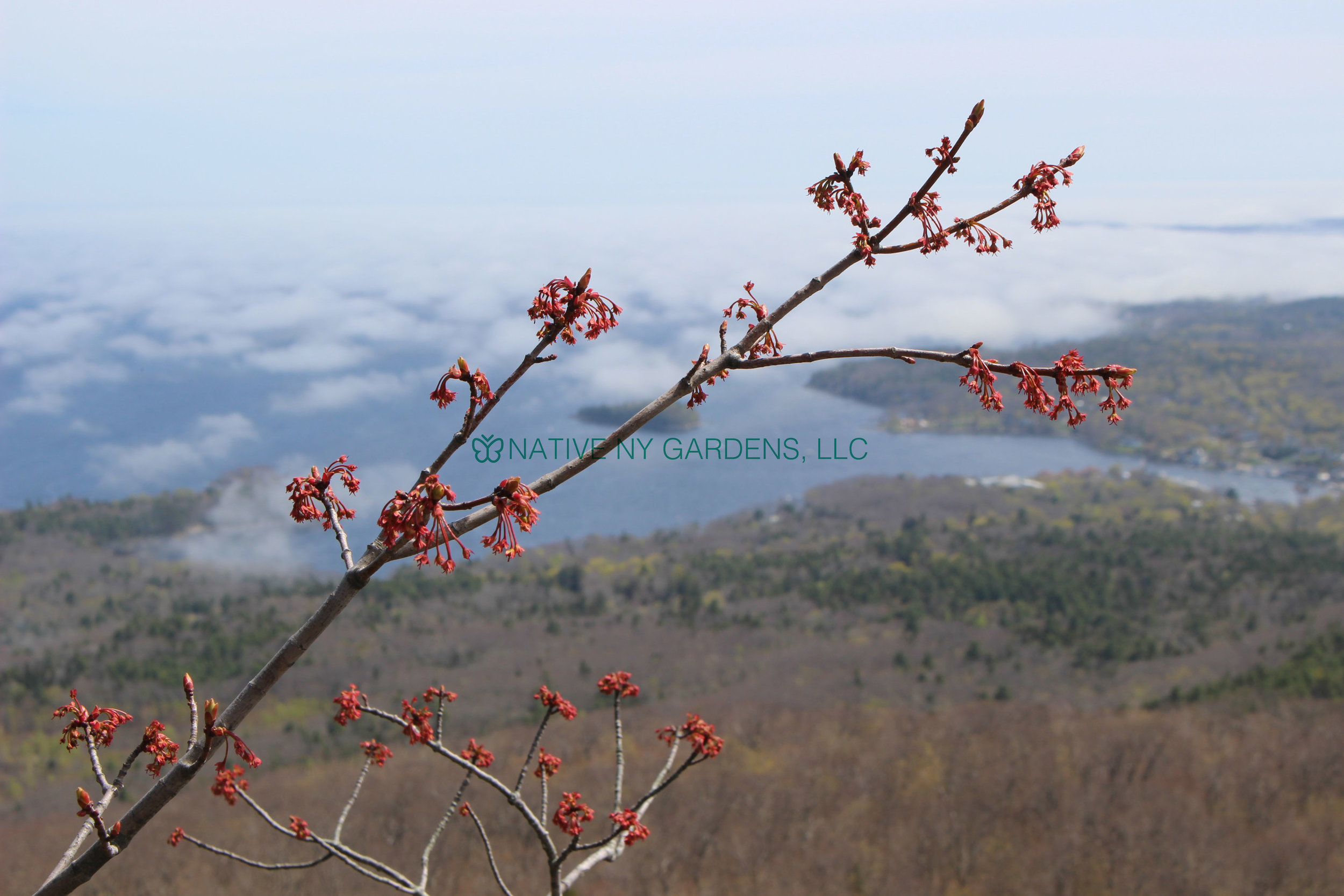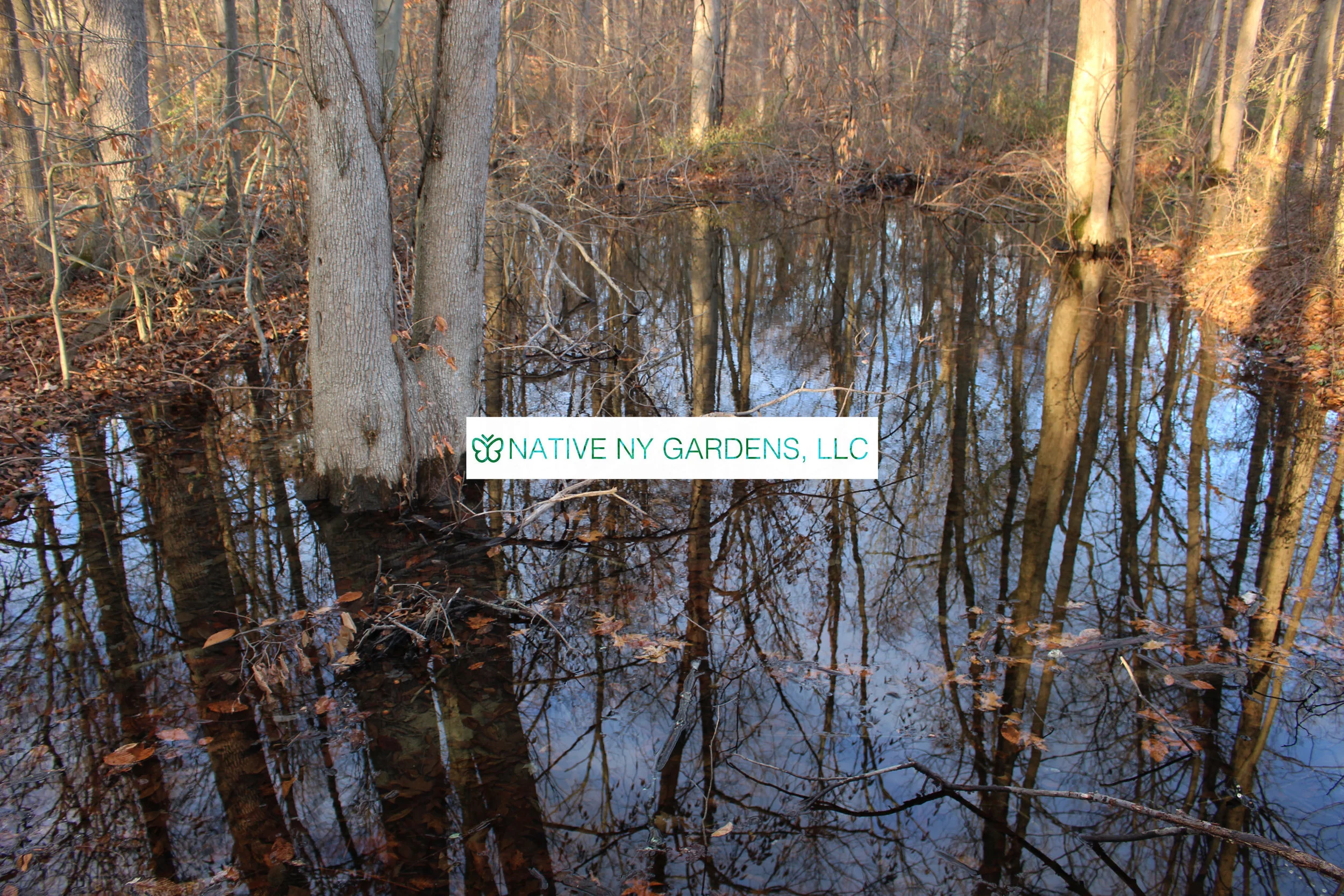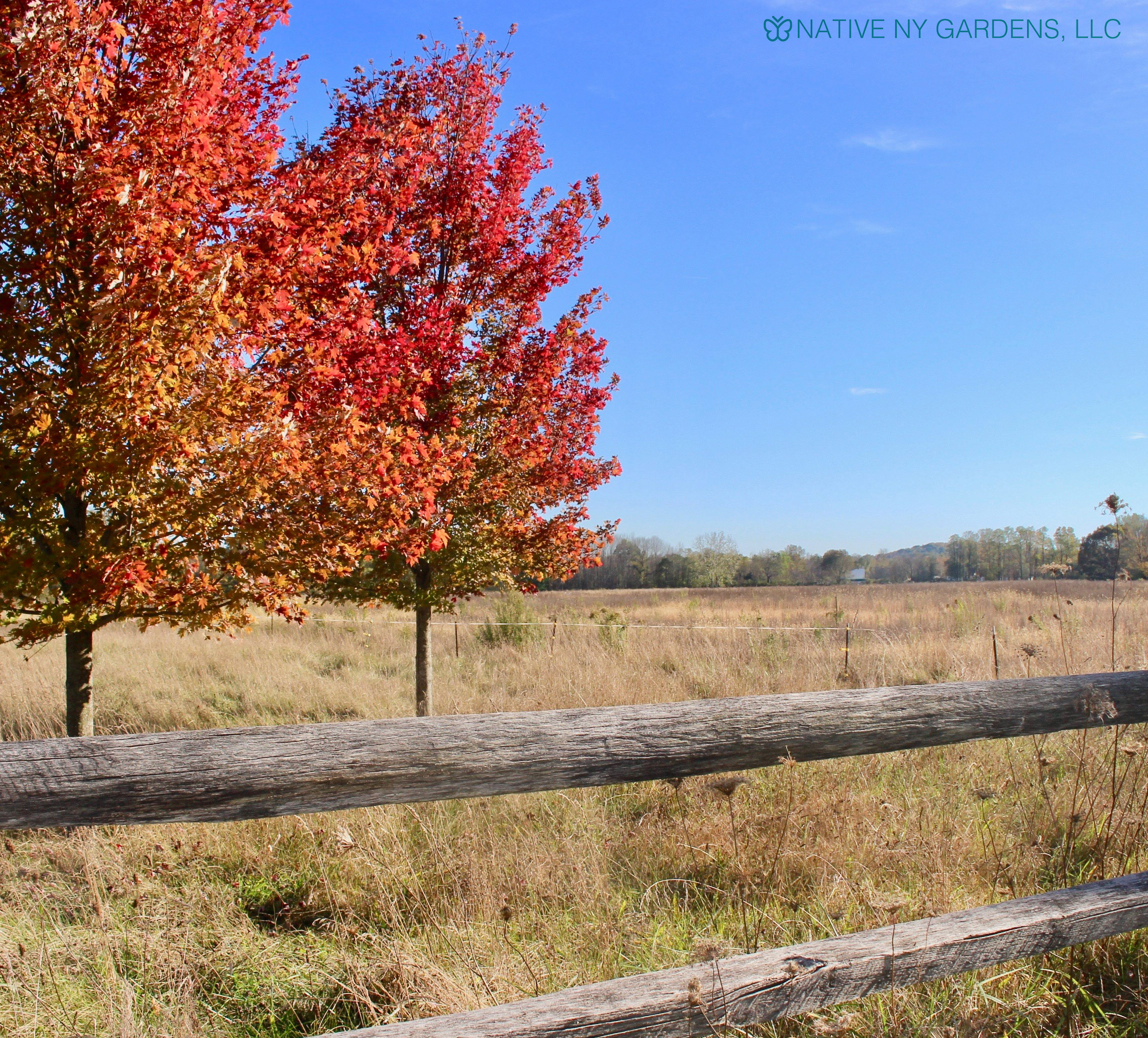Red Maple, an important spring blooming tree
One of the most important native trees of the eastern United States is the red maple. It can be found growing between Florida to Canada.
The red maple is a versatile tree, adaptable to dry sites but more commonly found in bottom lands, wooded areas with seasonal flooding. These are called red maple swamps.
The horticultural industry has cultivated a variety of red maples, which with consistent, high quality fall foliage, almost rivals its cousin, the sugar maple. The biggest difference between the two trees is that the sugar maple can boast a wide range of warm hues, most notability orange, while the red maple of course flaunts a streprium of red.
Most folks are not aware of this, but maple trees actually flower. Not only do they flower, but they're also some of the first trees to do so. The red maple's flowers, like its fall foliage, live up to its name, as they are red. They also play an important role for early emergent pollinators, native and nonnative. For example many honey bees will forage on this tree's flowers on sunny days between March and April.
Two months may be a long time for species of trees to flower but unlike other maples, red maples have a habit of blooming individually, at different times throughout spring.
While cold weather effects how often pollinators can feed, this tree plays an important role in providing early season energy to strengthen honey bee colonies and support native bee populations.
One of our favorite trees for its spring flowers, great fall color and benefits to pollinators, we highly recommend the red maple for any large-scale landscape.
-
Photo by: Mackenzie Younger 'Red maple blooming on mountain in April'
Photo by: Mackenzie Younger 'Red maple swamp, upstate New York'
Photo by: Mackenzie Younger 'October Glory' Red maple cultivar on upstate New York farm
Growing info
Height: 40.00 to 70.00 feet
Spread: 30.00 to 50.00 feet (depends on cultivar)
Bloom Time: March to April
Sun: Full sun to part shade
Water: Medium to wet
Growing zones: 3 to 9
ECOLOGICAL Importance
Early flowers provide forage for pollinators
Leaves are often browsed by deer and moose
Seeds are eaten by birds
Red maples play an important role in supporting ephemerals pools. Ephemerals pools are seasonal, wooded ponds or puddles which many amphibians depend on for breeding. By being able to grow in temporary flooded areas, the red maple's canopy provides shade which in return prevents ephemerals pools from drying out to soon.
The maple family (Aceraceae) supports close to 288 verities of butterflies and months (Lepidoptera).
Two notable moths from these 288 Lepidoptera are the Rosy Maple Moth (arguably one of the cutest moths ever) and the Cecropia Moth (the largest month native to North America)
Rosy Maple Moth on someones finger tip
Cecropia Moth on someones hand!






